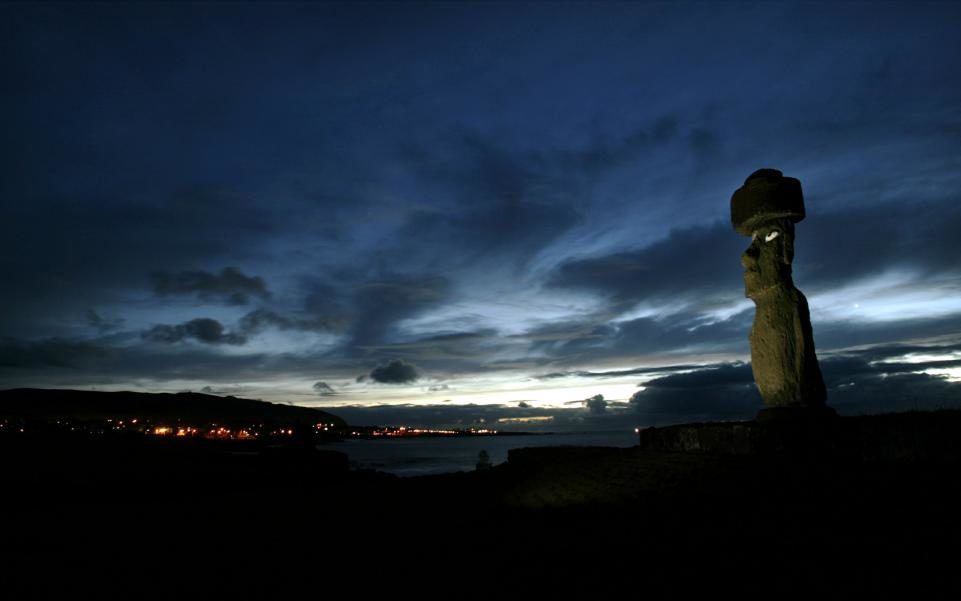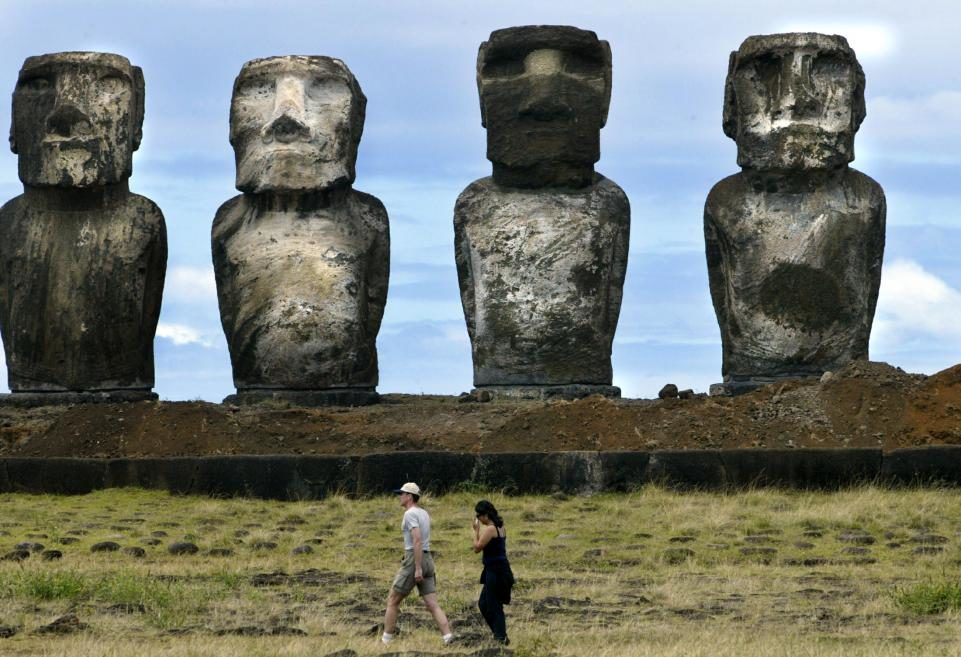
"The diversity of the petroglyphs challenges that these were symbols of warfare between groups," Carl Lipo, co-author of the study and anthropology professor at Binghamton University, told Newsweek by email. The findings of the study uncovered "quite a bit of diversity in the petroglyphs of the pukao-more so than have been traditionally noted given that we documented all the pukao surfaces."
Polynesians colonized Rapa Nui around 800 years ago, according to the study. They constructed nearly 1,000 monumental statues, called moai, which were topped with the pukao. The pukao are large cylinder-shaped stones made from volcanic rock known as red scoria, weighing multiple tons each. The largest stone hat is nearly seven feet in diameter and weighs over 25,000 pounds. Prehistoric islanders moved the heavy volcanic rocks as far as 7.5 miles.
For this study, researchers examined 70 pukao scattered around the island and eroded by time. A process called "structure from motion" mapping allowed researchers to produce 3D computer models to study the pukao in greater detail. They discovered that there were far more drawings carved into the hats than previously believed.

The history of the famous Easter Island is not well understood. New bits of information about the island's people could continue to be gleaned from the pukao.
"These monuments represent the result of communities working together and clearly had tremendous positive value," Lipo said. "As we've learned more about the nature of the resources on the island that are needed for community survival, we see that sharing and cooperation was a key factor ... The pukao data are another piece of the broader puzzle that we are assembling for the island."



Reader Comments
How about 'mysteries?'
R.C.
[Link] Namaste'
Four examples, three simpler, one more complex:
1. The spaceship moved to a position above North Pole, and then moved away from Earth. Yet somehow they were able to pass close to Saturn. How? Saturn is roughly perpendicular to any pole, and in June 1987 (or any month really) Saturn was actually below horizon when "observed" from North Pole (as it is now).
2. The brought tomatoes from Africa, really? Conquistadores had to bring them from South America, because there were none in Africa, and they wanted pizzaz badly.
3. They prevented use of atomic bombs by Germans, but 2 atomic bombs were needed to finish the WW2, really? Since Galbraith's Report we know for sure than the atomic bombs were unnecessary (the Japanese were ready to surrender, and the opposition against it was very weak and limited), and before that we were almost sure. American president just wanted to show Stalin, and was in hurry to do so before the Japanese surrendered. Stalin was amused, because he has seen it all already. Strange the aliens haven't.
4. Purity of Jews, and the whole of their supposed history. First of all, we know now, thants to molecular genetics, that this purity is a fiction. And there isn't even a single "Jewish" race, pure on not. Besides, it would be impossible to remain "pure" in any shape after 12 ky, coming from three ancestors (including a single male). They would have died long ago, in a state of total inbreeding. The whole concept is so preposterous it's idiotic. Other related questionable content is depiction of Abraham as a Jew (he certainly wasn't), or that the Jews are more intelligent than others (they are more smug if anything), also a total disregard of genocide of Bible, replaced by peans to the homicidal gangstas like biblical David, and jabs at non-jewish abrahamic religions. Sorry, but the Book is like something prepared by Mossad's department of propaganda.
In all, it's a fun fiction read, very enjoyable in that regard, and I'm thankful for the link, but treating it as a Bible would be a big mistake (as would be treating a Bible as a Bible).
demonstrate, with good cause, for the preservation of trees. They pejoratively call
you a ‘greenie’ or a 'hippy’ . Prove to the whole world and mainly to yourselves
that you can practise what you preach, because when you start working on your
communal farm, you’ll be able to do even more to preserve the environment;
you’ll even be able to create forests.
Great Read. I went to page 181 of Post-Script.
People tend to think we discovered this island with statues and no people. But Rapa Nui was discovered when it was still thriving and visitors did study them. It was after "discovery" that the population was diminished.
From that same UCLA dig.
Maybe not every statue and not every one has or ever well be dug up.
I was there in late 2011 when the ones with the designs were being excavated.
[Link]
[Link]